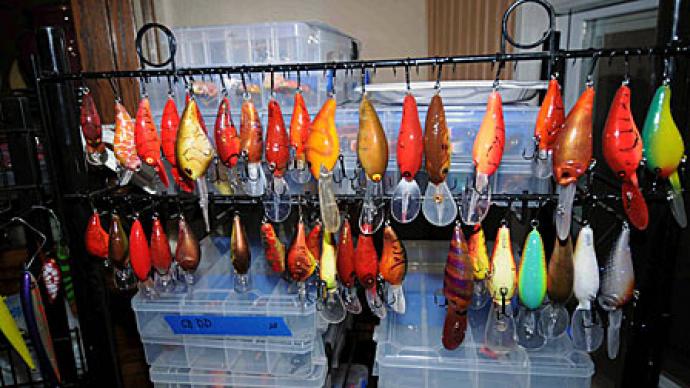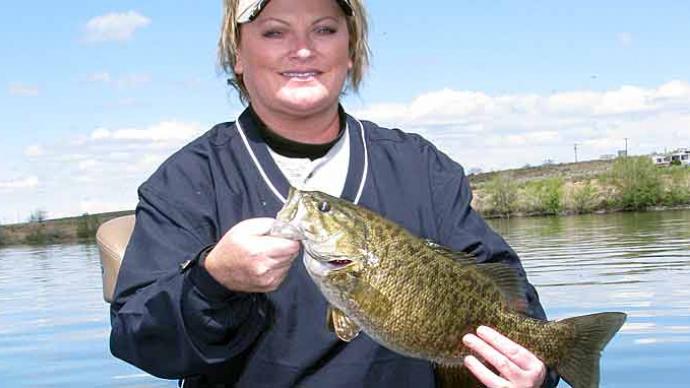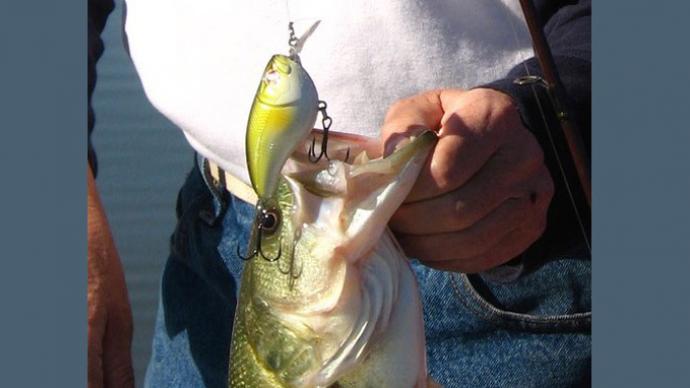
Crankbaits are effective tools used to produce bass year round, but how do you choose the right lure color in a world full of millions of lures? When you walk into the tackle department of your favorite store you are confronted by a huge selection of baits and displays set up to tantalize you with hundreds of variations of colors and patterns. To simplify the elimination process, base lure color selection there is a formula to make it easier.
Lure color choice should be based on the three Cs: clarity, conditions and confidence. To aid in unlocking the mystery to the subject of color, Texas pro bass fishermen Alton Jones from Waco and Zell Roland from Conroe were consulted. Surprisingly, both tended to have pretty much the same opinions toward lure color selection, which was based on years of experience and fishing waters all over the United States, not just Texas.
In a world full of color it is still best to simplify as much as possible and both anglers agree that the standard arsenal consists of five basic color patterns, depending on the season and type of lake being fished.
Primarily the colors used the most are brown/orange/red combinations resembling crawfish, chartreuse/blue combinations imitating bluegill, and baits resembling shad, a natural prey for bass, including chrome/black, chrome/blue, Tennessee shad and various pearl/white patterns.
Before delving any deeper into color, one must first and foremost have an understanding of water clarity to be able to select the appropriate bait. We basically have four kinds of water clarity in the south, muddy, dingy, stained and moderately clear with a greenish hue. A fifth type of water is primarily found out west which is extremely ultra-clear water, such as in lake Mead and some of the California takes where you can see your bait in 40 feet of water.
In muddy and dingy water with a visibility of one to four feet, it's a good idea to stick to florescent-colored baits because of the high visibility and in particular, chartreuse and firetiger work really well under muddy conditions. This point was well driven home when I fished with alton Jones on a lake that had really strong current, stained to muddy water and no grass.
He proceeded to find quality fish in a small creek off the main lake that had less water current and the fish were holding in the shallows in water that was from zero to about two feet in depth, on a rocky secondary point. He cleaned house on a Fat Free Shad in a firetiger color and that's primarily the only bait he threw for over half of the day.
We came out of that creek and headed north into the headwaters and switched over to fishing main-lake, rocky points with current using a brown jig tipped with a Zoom black/blue chunk. The only two colors he used all day were chartreuse firetiger and brown/blue, which were perfect for the water quality and the conditions we were fishing.
Most of our reservoirs in Texas have stained (visibility one to three feet) and moderately clear water with a greenish tinge to the water and bait visibility up to about eight feet as a result of the presence of tannic acid and good quality filtration through lots of vegetation. Fishing this type of water can produce bass from depth ranges up to around 25 to 30 feet.
Shad-colored baits are quite effective in stained and moderately clear lakes. Tennessee shad is another productive color to use in this type of water. Yes, you can throw out any color you wish, but as the old saying goes, if you're not in the right place using the right bait with the right presentation, you're likely to not get bit!
I asked Zell Roland what he considered more critical to lure selection, water clarity or light conditions. He answered, "Both are crucial, but water clarity is the dominating factor, although light penetration is very important to the equation.
As the fishing day wears on, the light generally becomes brighter and the color patterns may vary depending on the light filtration penetrating the water at the depth you are fishing. The first color to fade out of the color spectrum under high visibility will be the reds.
Wind will also affect the light penetration and throws in another variable into the equation. And obviously, more wind creates less light penetration and under these conditions, Zell stresses the use of high contrast baits. This point was proved with Alton Jones in the above example, when due to current, rising water and high winds, he switched off his crankbait to a jig tipped with a contrasting colored plastic crawdad imitation. He successfully boated enough keepers on this pattern to put him in second place on the Skeeter Jamboree tournament, and all because of his savvy in knowing when to change color and bait patterns to produce bass and under what conditions to make those changes.
As most of us already know, bass will hit a lure based on sight, vibration, sound or smell. Depending on the season, Zell relies on the rule of thumb of using darker-colored baits in the winter and early parts of the year and graduating to lighter-colored baits as the water temperature warms.
For example, if you are using an orange/red crawfish colored Bomber Model A, in pre-spawn conditions in dingy to stained water, having that color in every size range for that specific bait is essential. Other factors such as wind, light penetration, water clarity and size of the forage help the pros determine the size of crankbait to most effectively probe the waters.

Roland says he will have several baits in this same color, but different sizes tied on and ready to go and will experiment until the fish tell him what they want.
As the water temperature rises the fish will become more active and begin to chase the primary forage fish of shad and bluegill, which is why chartreuse/blue back imitations begins to work really well. As water temperature continues to heat up, it is time to gradually change over to the lighter and more naturally colored baits. Zell suggests using crankbaits with a contrasting darker-colored back, such as chrome/black back, chrome/ blue, pearl/ green back, etc.
These baits work particularly well under low light conditions. The contrasting color helps bass key in to the bait and makes the lure look more natural moving through the water. Lighter-colored baits are much more effective in warmer and clear water under bright light conditions.
When fishing clear and ultra-clear water, natural-colored or transparent baits on a much smaller scale and size are great producers. Longer casts may be required due to high bright skies, and the fish will naturally be spooky and more distance will be required between the angler and the fish. Usually you will want to concentrate your efforts on the lower end of these deep, clear-water lakes and the mouths of tributaries.
In colder water, a more vertical presentation is required. Most fishing in these types of waters will be off-shore in the deeper waters along the ledges and drop-offs.
All of you have been confronted by another angler or know some seasoned diehard that believes color doesn't matter. In some instances, under some conditions, this can be true. Often in actuality, these anglers only use a handful of confidence baits that have been proven over the years to be successful on the waters they fish. They have probably spent years in trial and error in determining which baits are productive. When push goes to shove, they will always select confidence baits over color regardless of the conditions and are generally quite successful with their selections. No doubt about it, confidence equates experience which results in success, but if you will follow the three C's, the color selection game becomes just another variable to the continuing puzzle of finding and producing bass on any given occasion under all conditions.
One of the keys to understanding lure color selection is water color and clarity. That can be as simple as using darker colors in the winter and early months of the year and as the water warms graduate to the lighter-colored baits. Use florescent and bright colored baits in muddy and dingy water, and lighter colored baits in clear and warmer waters. Mastering these simple keys will do wonders in unlocking the mystery of color for you.




